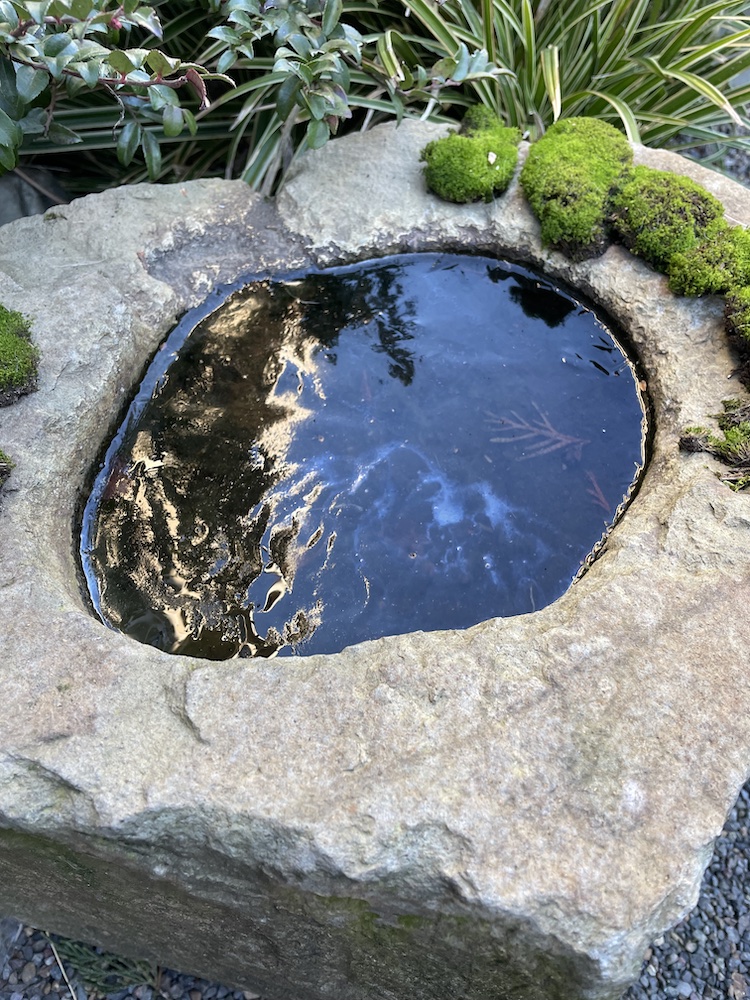The Rome, Italy, Botanical Garden is perhaps Europe’s oldest with the original garden planted in the 1200s. For five Euros admission, one can experience more than a dozen gardens and plant collections in one site including a Japanese garden, a butterfly garden, cactus gardens and greenhouses, a French greenhouse, a conifer garden, a fern garden, a bamboo garden, a rose garden, a Mediterranean garden, an herb garden, a flower garden, a palm tree collection, a grape vine collection, a tropical greenhouse plus numerous fountains and other features dating back to the 1700s. Also see perhaps the largest palm tree in Europe. For plant lovers, this garden is a must-see attraction and is a welcome and quiet oasis in an otherwise busy and noisy city. We ended our five day visit to Rome in this garden—a high point of our trip to this amazing city. Check it out!
Lawrence Sukashi Japanese Garden—Spring Update & Detailed Tour
The Emerald Ash Borer Beetle—How to Save Your Ash Tree
The emerald ash borer beetle is now in the Portland, Oregon, area and is spreading rapidly. In a few years, nearly all the ash trees will be dead including yours, unless you take preventative measures. In this video, Nathan explains what you can do to save your ash tree. In most cases, an ash tree can be treated for 20 to 30 years for the cost of removing it. Check out this video and learn all about it. For a deep dive into this subject, check out our longer video at https://www.youtube.com/watch?v=rBTADVg5KpE. Cheers!
Emerald Ash Borer Beetle Hits NW Oregon–Problem/Solution Explained
In this video, Nathan goes into detail explaining everything about the emerald ash borer beetle (or EAB) that has recently hit NW Oregon (in the Portland area) and is rapidly spreading. This destructive, invasive pests kills ALL ash trees that it infests within several years. Nathan discusses the pros and cons of saving your ash tree, treatment options, costs and how to identify signs and symptoms of the beetle on your tree.
- For more info on the EAB, go to https://www.aphis.usda.gov/aphis/newsroom/stakeholder-info/stakeholder-messages/plant-health-news/eab-or
- https://www.oregon.gov/oda/programs/IPPM/SurveyTreatment/Pages/EmeraldAshBorer.aspx
- https://static1.squarespace.com/static/58740d57579fb3b4fa5ce66f/t/60772a17647ad466155f74a7/1618422303582/March+2021_EAB.pdf
- https://www.oregon.gov/oda/programs/IPPM/Documents/EmeraldAshBorer.pdf https://catalog.extension.oregonstate.edu/sites/catalog/files/project/pdf/em9160.pdf
- https://oregoninvasiveshotline.org
- https://extension.oregonstate.edu/forests/cutting-selling/what-do-about-emerald-ash-borer-recommendations-tree-protection-eab
- http://www.emeraldashborer.info
- https://www.invasivespeciesinfo.gov/terrestrial/invertebrates/emerald-ash-borer
- https://www.aphis.usda.gov/aphis/ourfocus/planthealth/plant-pest-and-disease-programs/pests-and-diseases/emerald-ash-borer
- https://www.aphis.usda.gov/aphis/resources/pests-diseases/hungry-pests/the-threat/emerald-ash-borer/emerald-ash-borer-beetle
- https://www.aphis.usda.gov/plant_health/plant_pest_info/emerald_ash_b/downloads/What-is-the-EmeraldAshBorer.pdf
- https://www.arborday.org/trees/health/pests/emerald-ash-borer.cfm
March in the Garden—A To Do List
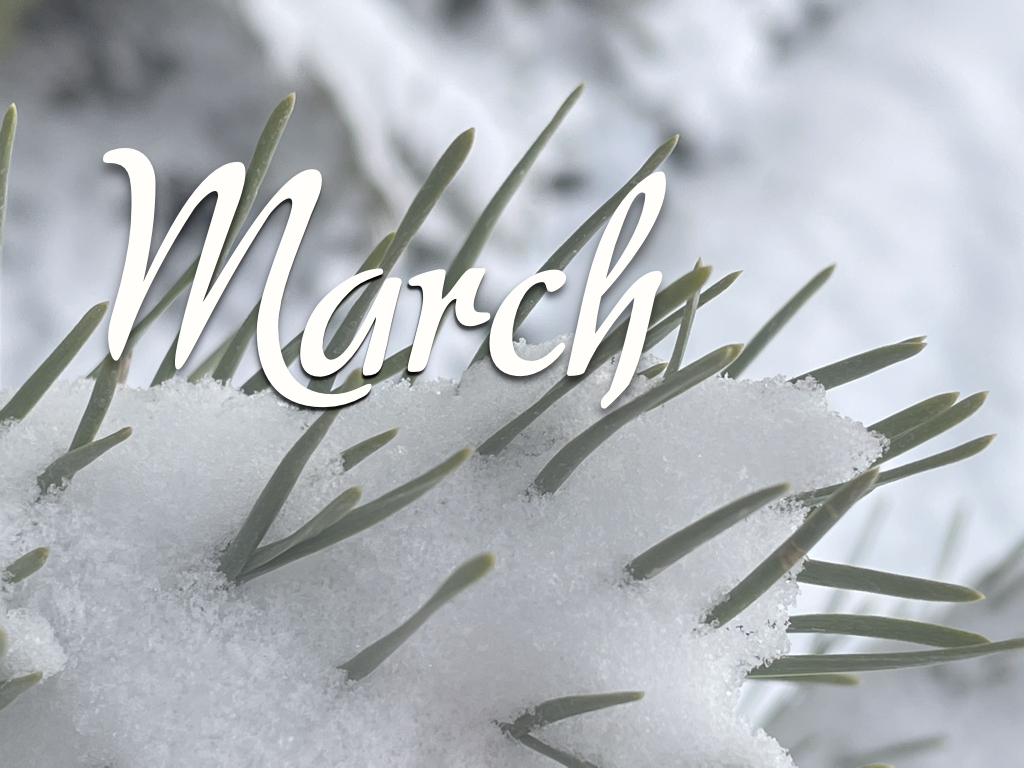
This guide is tailored for the western valleys of Oregon and Washington.
YOU can help to make the world a better, a more friendly, loving and beautiful place by being a good steward of the spot on this earth, your garden, that you have been given the privilege of borrowing for a time. It is our hope that the following to-do list will help you to do just that.
Nathan, the Treevangelist, that is, the preacher of the good news about the beauty and benefit of trees, urges you to treat your spot on this planet like your own personal biblical Garden of Eden. May it become your personal paradise and refuge from this hectic and stressful world. The care of your garden is your divinely mandated responsibility. Your trees, shrubs, flowers and the wildlife in your yard depend on your vigilant and loving care, and they will pay you back as they express their smiling appreciation to you and yours by radiating their love, joy and beauty bursting forth with vibrant and verdant life. Below is a to-do list to help fulfill this godly mission.
Disclaimer: This writer’s vantage point is from that of the Portland south-metro area, so my descriptions of weather events are from the perspective of that venue. That aside, we may have thought that the worst of winter was over. We had lots of rain, a few chilly days, a couple of minor wind events, some flirtations with snow and an epic graupel storm that left about an inch or so of the soft hail-like hominy snow blanketing the earth in my neighborhood, but besides that, there were no serious winter weather. By late January and early February, some plants like hydrangeas were tentatively beginning to pop out a few leaves. I even saw a rhody and flowering plum tree beginning to bloom. Did we easily skate through this winter sliding into an early spring? Maybe?
But then winter pulled a fast one on us during the last week or so of February and hit the Portland area with some record snow—up to 12 inches in some places. In my backyard, I measured a solid four inches of the white stuff—the most we have received here in a few years. During that time, nighttime temps dipped into the low 20s. Since then, and for the last few days, the threat of more snow has been taunting us, until today—the last day February— when, just as the last snow had finally melted from the previous storm, we had another small dump of snow that left the everything pretty well covered.
For those who live east of the mountains, or in many other places in northern US climes, our reactions to this bout with snow is laughable if not bit sophomoric. To that, I say, the size of your trees are laughably small compared to ours. So there!
Anyway, the cold weather may have nipped back some of the shrubs that had prematurely started leafing out or even blooming, but don’t worry. This won’t kill them. They may suffer a little frost bite, but they will leaf back out again.
As far as the drought goes, to be sure, all the precipitation has helped the water-starved trees by loading up the soil with stored moisture, but we’re not out of the proverbial woods yet. Last winter was great for rain, but many large native trees (e.g., Douglas-firs, western red-cedars and Oregon white oaks) were still stressed from previous dry winters coupled with longer and hotter summers. As a result, many trees continued to decline if not die. For the first time in hundreds of years, even some of the mighty, centuries-old oak trees appeared to be dying. We’ll see if they have the remaining strength reserved in their huge trunks and root systems to pull through or not, but I have my concerns. We shall see…
In the mean time and while you’re at it, take a few moments and scroll back through this same Good News Tree Service, Inc. blog and check out the archives for any tree and plant care articles that you may have missed. Also check out our YouTube channel at https://whitebait/channel/UCvcu2lL9NpgoXQtUFYyQShw, our Facebook page at https://www.facebook.com/GoodNewsTreeService/ and our main website at www.goodnewstree.com. Please enjoy!
Readers’ suggestions on how to improve this list are gladly solicited. If you, the reader, have any suggestions for additions to this month’s list, please put them in the comments section of this article, and I will add them to the list. Thank you in advance! — Nathan
Tree and Shrub Care
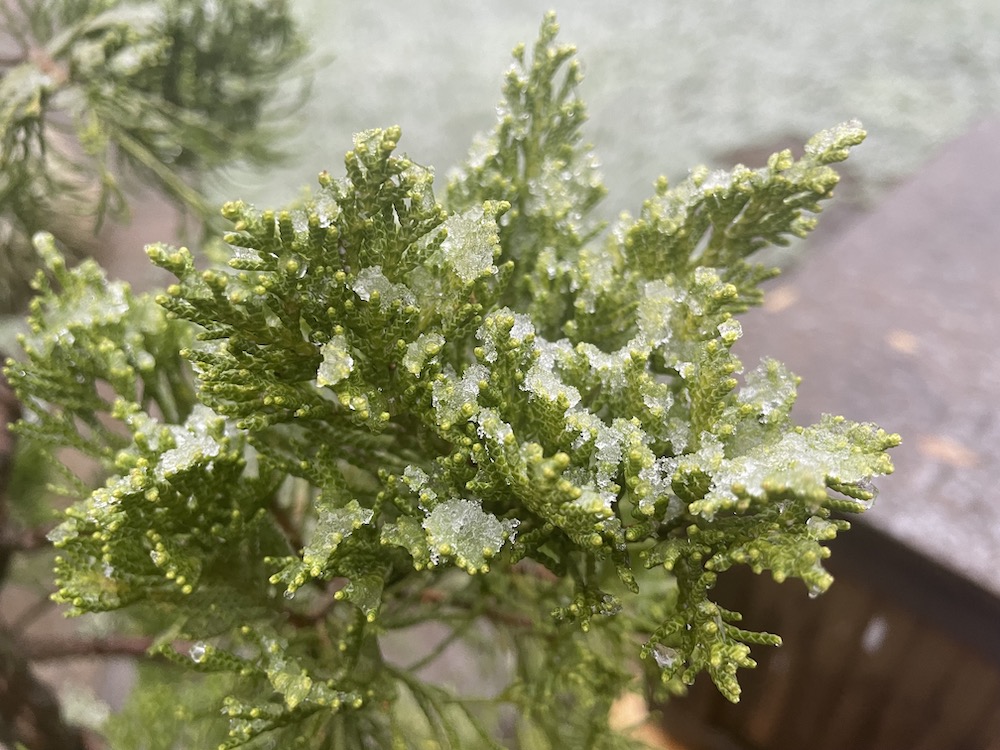
- Fruit tree pruning. Prune your fruit trees for fruit production. You can also prune grapes, cane and trailing berries once the threat of major frost is past.
- Mulch. Apply two to three inches of mulch around all trees and ornamental shrubs. This helps to fertilize the plants and feed the soil, and also protects them against weed growth and loss of water when the warmer weather returns.
- Pine tree pruning. Prune coast or shore pines (Pinus contorta) and Scotch or Scots pines (Pinus sylvestris). These two pines are especially susceptible to the sequoia pitch moth whose larvae burrow into the tree trunks during the growing season (April through September) causing the trees to exude large amounts of unsightly pitch globules. While this seldom kills the tree, the bleeding of sap is not good for the overall health and vigor of the tree. It is advisable, therefore, not to prune these pine trees during the growing season, since the pruning cuts attract the moth, which then lays eggs on the tree, which hatch into tree-burrowing larvae. Pruning should be done on your pines from November to March.
- Plant fruit trees. At this time of the year, bare root fruit trees can be purchased inexpensively at your local garden center. It is imperative to plant them while they are still in their dormant state and before their buds start to swell just before bloom time.
- Plant trees and shrubs. Now is an excellent time to plant all kinds of trees and shrubs in the garden, while the weather is cool and the plants are still dormant. This is also a good time to reduce the height of overgrown fruit trees, since they are likely to produce fewer water sprouts now then when pruned in the spring.
- Plant or transplant trees and shrubs. Winter is a good time to plant or transplant ornamental trees and shrubs. Cooler weather means less transplant shock to the plants, and over the winter and spring, they will have time to begin to acclimate to their new environment before the stress of the next summer season occurs.
- Pruning heavily of some ornamental shrubs. Now is an excellent time to do major pruning (even back to bare stocks) of certain overgrown evergreen shrubs before they start their new growth in the next month or so. Shrubs that can be pruned back severely include rhododendron (or rhody), camellia, andromeda or lily of the valley shrub, Japanese holly, laurel and photinia to name a few. Not all shrubs can take such severe pruning, so know the growth habits of your plant before doing so. When you prune, make sure that you cut back to a bud point or a branch union. Do not cut internodially or between buds points or leaf whirls.
- Pruning of large trees. Winter is a great time to do aesthetic and structural pruning of deciduous trees and shrubs, since the structure or architecture of the plant is clearly visible making aesthetic pruning easier than when plants are foliated. Structural defects, which can cause tree failure, are more easily spotted as well. Also remove of dead wood, and pruning to reduce hazards. If you’re not sure what to do, or how to do it, call Good News Tree Service, Inc. for a consultation, pruning lessons or to have them do the pruning for you.
- Reparative pruning. Repair winter damaged to trees and shrubs.
- Roses. The best time to prune roses is after the threat of major frost is past.
- Trees. Have an ISA Certified Arborist with an ISA Tree Risk Assessment Qualification (like Good News Tree Service, Inc.) inspect your large trees for the potential of failure due to weak root systems and defects in trunks and branches. This is best done when the leaves are off the trees.
- Tree and shrub removal and stump grinding can be done all year long.
Plant Health Care

Good News Tree Service, Inc. provides full plant health care services as listed below.
Continue readingThe Emerald Ash Borer Tree Killer—What it is and what to do about it
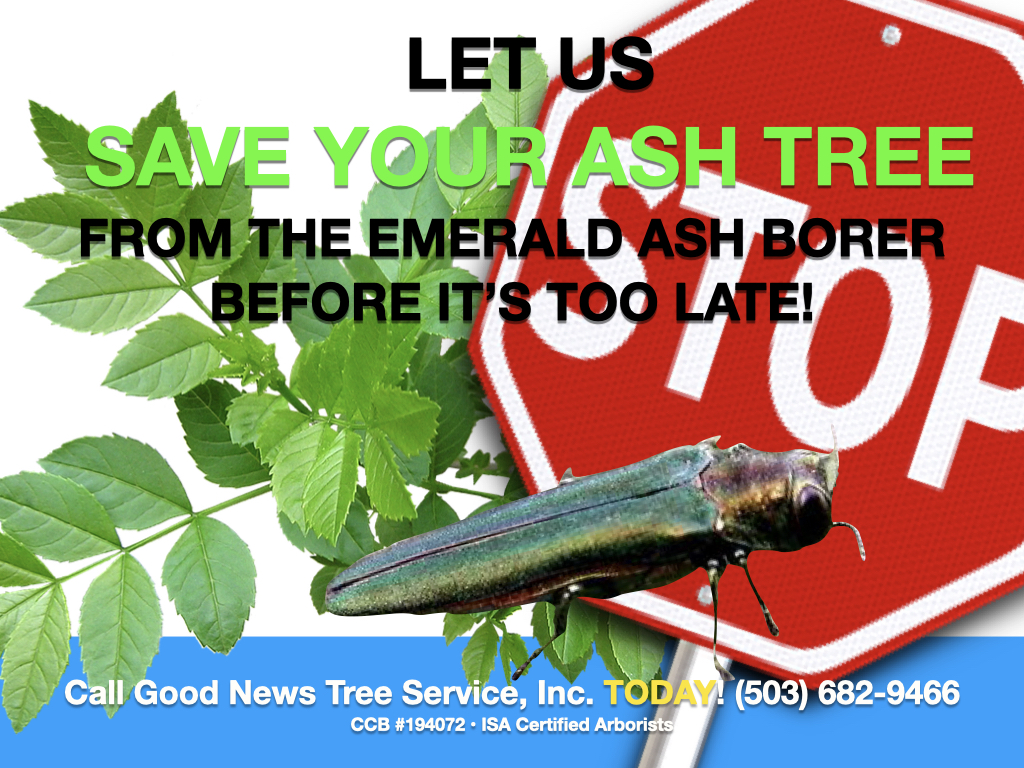
There’s a new tree pest in town called the emerald ash borer (or EAB) and it wants to kill all the ash trees in this area.
The Emerald Ash Border (or EAB) was discovered in the summer of 2022 in hundreds of trees in the Portland Metra area and is spreading rapidly throughout the region.
According to the Oregon Department of Agriculture, the EAB “is a highly destructive invasive forest pest” that has killed over 100 million ash trees so far in the US. It moves quickly, and can cause nearly complete mortality of ash trees within about several years after detection. There are no effective means of eradicating the EAB once the insect is established in an area. Once a tree canopy has been thinned or been reduced by 20 to 30 percent or more by EAB feeding activity, it is too late to save the tree. It will die.
Good News Tree Service, Inc. can save your ash tree from the EAB beetle before it’s too late. CALL US TODAY FOR MORE INFO!
Frequently Asked Questions About the EAB
What trees species does the Emerald Ash Borer attack?
The EAB attacks all varieties of ash or Fraxinus trees regardless of variety, size, age or the health status of the tree. It also attacks the white fringetree (Chionanthus virginicus) and cultivated olive trees (Olea europaea).
How quickly does EAB spread?
The beetle can fly several miles (sometimes up to 15 miles) from one infested tree to one that is not. However, the most likely means by which the EAB spreads is thought to be by hitchhiking on vehicles and by translocated firewood. That’s why the EAB is more likely to spread to trees in areas along major freeways and highways, which opens up the entire Willamette Valley to the EAB.
How quickly will the EAB kill my tree?
An ash tree usually dies within four to six years after initial infestation. For the first couple of years of EAB infestation, it may be impossible to detect EAB activity in a tree, which is why trees worth saving need to be treated earlier rather than later.
What are the signs that my tree has EAB?There are several including:
- Thinning of a tree’s crown.
- Branch dieback.
- Woodpecker activity.
- One-eighth inch sized capital “D” shaped holes in the bark of the tree.
- Splitting bark.
Progression of EAB symptoms in a tree, which may occur a couple of years after the tree has already been infested include:
- Year one: no crown thinning.
- Year two: moderate crown thinning.
- Year three to four: heavy crown thinning and death.
What are my options when it comes to EAB?
- Do nothing. Then wait for your tree to die as you unwittingly facilitate the spread of the EAB to your neighbors’ ash trees.
- Remove the tree. If your ash tree is small (smaller than six inches in diameter), we recommend removing it and replacing with another species of tree. The cost to remove an ash tree and its stump can be $1,500 or more. This does not factor in the diminished value to your property that the removal of a mature tree will cause. In Portland, for example, the assessed value of mature ash tree is $3,12013. Plus, this not cover the cost to replace the tree, which is often a requirement in many municipalities.
- Treatment. Considering treating high-value ash trees with an insecticide, which is a proven way of protecting your tree. Keep in mind that this will cost hundreds of dollars and must be repeated every few years, thus requiring a long-term commitment.
Is there anything I can do to protect my ash tree?
Other than treating your tree with a systemic insecticide, the answer is no.
How effective are treatments?
If an ash tree is treated in time, usually before 20 to 30 percent defoliation occurs, the survival rate is about 99 percent. After that level of defoliation occurs, will die the tree thus becomes a standing hazard requiring removal.
What is the cost to treat my ash tree for EAB?
The cost to treat an average sized ash tree (20 inch diameter at breast height) is around $300 to $400 (or less for quantity discounts). Generally one can treat an ash tree for 20 to 30 years for the same cost as removing it and replacing it with another tree. Often local municipalities require that you replace your tree especially if it is a street tree, which adds to the overall cost of removing a tree.
How often do I need to treat my tree?
An ash tree will need to be treated only once very two to three years, and will need to be treated for the life of the tree.
How are the treatments applied and are they environmentally safe?
Yes! Absolutely. The systemic insecticide we use is injected directly into the tree’s vascular system (like and IV), so it all goes into the tree, thus there is no residue present to harm pets or people. The product we use also doesn’t harm bees or other pollinators.
More Info About EAB
Oregon State University Extension Service— general info: https://extension.oregonstate.edu/forests/cutting-selling/what-do-about-emerald-ash-borer-recommendations-tree-protection-eab
Oregon State University—EAB identification guide: https://catalog.extension.oregonstate.edu/sites/catalog/files/project/pdf/em9160.pdf
OSU Extention Service–general info and more links: https://extension.oregonstate.edu/announcements/emerald-ash-borer-quarantine-adopted-washington-county-effective-dec-20-2022-may-16
OSU Extention Service:
https://extension.oregonstate.edu/forests/cutting-selling/what-do-about-emerald-ash-borer-recommendations-tree-protection-eab
Footnotes
1–EAB confirmed in Oregon: https://www.aphis.usda.gov/aphis/newsroom/stakeholder-info/stakeholder-messages/plant-health-news/eab-or
2–Oregon Department of Agriculture: https://www.oregon.gov/oda/programs/IPPM/Documents/EmeraldAshBorer.pdf
3– Oregon Department of Forestry: https://static1.squarespace.com/static/58740d57579fb3b4fa5ce66f/t/60772a17647ad466155f74a7/1618422303582/March+2021_EAB.pdf
Save Your Ash Trees NOW from the New Killer Pest in Town!
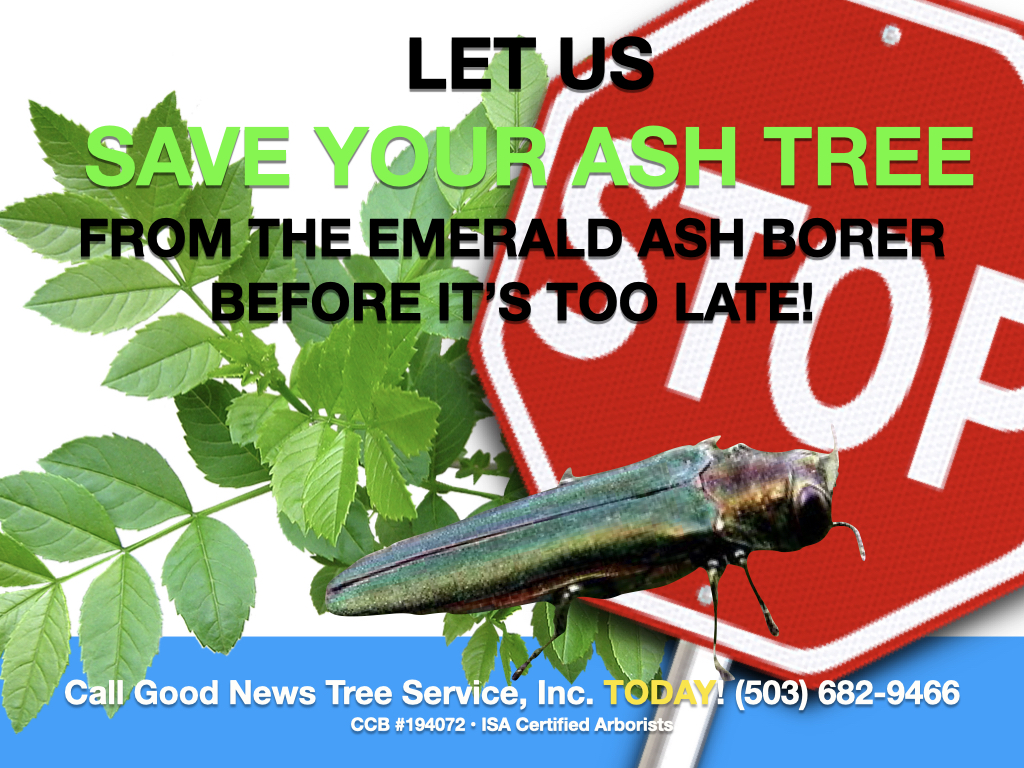
Stay tuned for more info on how to protect your ash trees from this deadly pest that recently hit the Portland area and is spreading throughout the region. Your ash trees will likely die within four to six years if not treated NOW!
Soon we will be posting answers to frequently asked questions about this deadly killer including:
- How to know if your tree is an ash tree.
- How to identify the symptoms of emerald ash borer infestation (or EAB).
- What the most effective and least expensive treatments are.
- When to treat your ash tree.
- What will happen if you do not treat your ash tree.
February in the Garden—A To Do List

This guide is tailored for the western valleys of Oregon and Washington.
YOU can help to make the world a better, a more friendly, loving and beautiful place by being a good steward of the spot on this earth, your garden, that you have been given the privilege of borrowing for a time. It is our hope that the following to-do list will help you to do just that.
Nathan, the Treevangelist, urges you to treat your spot on this planet like your own personal Garden of Eden. May it become your personal paradise. This is your divinely mandated responsibility. Your trees, shrubs, flowers and the wildlife in your yard will pay you back as they express their smiling appreciation to you and yours by radiating their love, joy and beauty bursting forth with vibrant and verdant life. Below is a to-do list to help fulfill this mission.
Well folks, there’s not much to report from this corner of the planet weatherwise so far this year. Winter has kind of been a bit subdued to date. A cup or two of subfreezing temps, a couple of gallons of rain, a dash of sun thrown to taste, three tablespoons of wind, a package of buds on the leaves that are sprouting prematurely, a pound of winter camellia blooms to add some color to the fare and so far you have recipe for a pretty typical, if not, boring winter. Count your blessings; it could be worse! We could be drowning, freezing to death, suffering from hypothermia, buried in snow, being blown to kingdom come or dying of thirst. Enough said.
While you’re wondering what to do, scroll back through this same Good News Tree Service, Inc. blog and check out the archives for any tree care articles that you may have missed. Also check out our YouTube channel at https://www.youtube.com/channel/UCvcu2lL9NpgoXQtUFYyQShw and our Facebook page at https://www.facebook.com/GoodNewsTreeService/ or our website at https://goodnewstree.com. I am regularly adding new videos for your education and pleasure. Please enjoy!
Readers’ suggestions on how to improve this list are gladly solicited. If you, the reader, have any suggestions for additions to this month’s list, please put them in the comments section of this article, and I will add them to the list. Thank you in advance! — Nathan
J. Nathan Lawrence the Treevangelist and owner of the Good News Tree Service, Inc. in Wilsonville, Oregon (a fourth generation Oregonian, OSU Master Gardener, ISA Certified Arborist, ISA Tree Risk Assessment Qualified, Oregon Dept. of Agriculture Licensed Commercial Pesticide Applicator)
Tree and Shrub Care
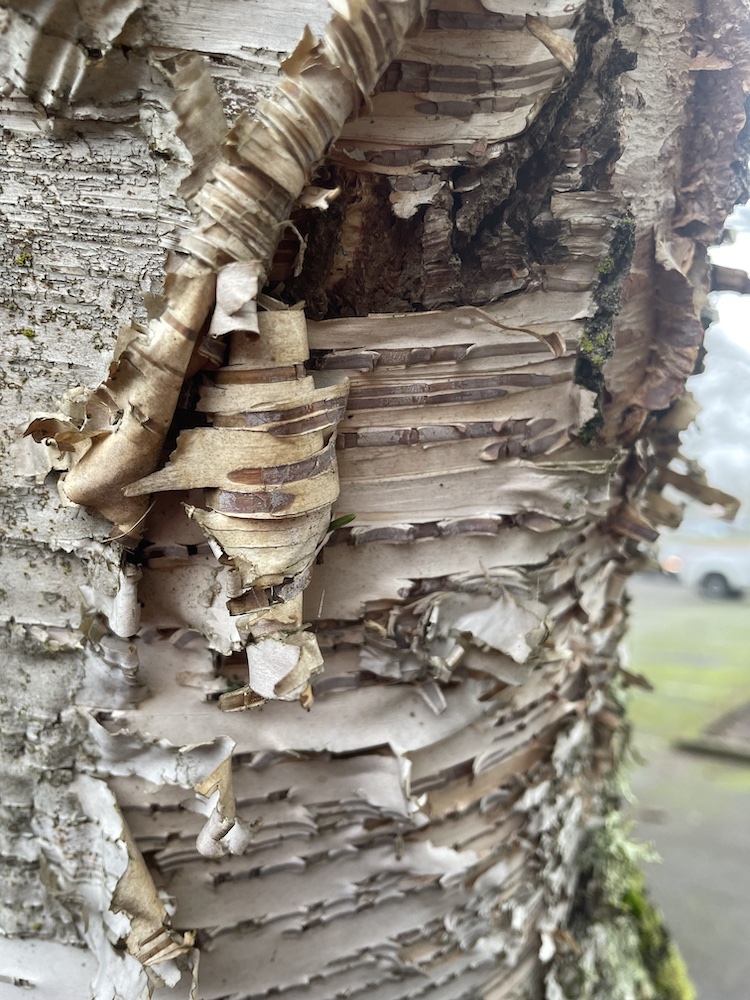
- Fruit tree pruning. Now is the time to prune your fruit trees for fruit production. You can also prune grapes, cane and trailing berries once the threat of major frost is past.
- Hazard tree assessment. Have an ISA Certified Arborist with an ISA Tree Risk Assessment Qualification (like Nathan at Good News Tree Service, Inc.) inspect your large trees for the potential of failure due to weak root systems and defects in trunks and branches. This is best done when the leaves are off the trees.
- Mulch. Apply two to three inches of mulch around all trees and ornamental shrubs. This helps to fertilize the plants and feed the soil, and also protects them against weed growth and loss of water when the warmer weather returns.
- Pine tree pruning. Prune coast or shore pines (Pinus contorta) and Scotch/Scots pines (Pinus sylvestris). These two pines are especially susceptible to the sequoia pitch moth whose larvae burrow into the tree trunks during the growing season (April through September) causing the trees to exude large amounts of unsightly pitch globules. While this seldom kills the tree, the bleeding of sap is not good for the overall health and vigor of the tree. It is advisable, therefore, not to prune these pine trees during the growing season, since the pruning cuts attract the moth, which then lays eggs on the tree, which hatch into tree-burrowing larvae. Pruning should be done on your pines from November to March.
- Plant or transplant trees and shrubs. Winter is good time to plant or transplant ornamental trees and shrubs. Cooler weather means less transplant shock to the plants, and over the winter and spring, they will have time to begin to acclimate to their new environment before the stress of the next summer season occurs.
- Plant fruit trees. Not only is this a good time to plant bare-root fruits trees, which you can purchase now at many garden centers, but it’s an excellent to plant all kinds of trees and shrubs in the garden, while the weather is cool and the plants are still dormant. This is also a good time to reduce the height of overgrown fruit trees, since they are likely to produce fewer water sprouts now then when pruned in the spring.
- Pruning of large trees. Winter is a great time to do aesthetic and structural pruning of deciduous trees and shrubs, since the structure or architecture of the plant is clearly visible making aesthetic pruning easier than when plants are foliated. Structural defects, which can cause tree failure, are more easily spotted as well. Also remove of dead wood, and pruning to reduce hazards. If you’re not sure what to do, or how to do it, call Good News Tree Service, Inc. for a consultation, pruning lessons or to have them do the pruning for you.
- Pruning of ornamental shrubs. Do major pruning (called heading back) of rhododendrons (or rhodies) and other similar ornamental shrubs back to latent buds in trunks and stalks. Do this before spring growth begins in a couple of months.
- Roses. The best time to prune roses is after the threat of major frost is past.
- Tree and shrub removal and stump grinding can be done all year long.
- Trees and Storms. Storm proof your larger trees. Checking your trees for hazards and then take the appropriate measures to protect your trees from storm damage. After each major weather event, check your trees for damage such as broken or hanging limbs. If you have concerns or questions about your trees, have an ISA Certified Arborist with an ISA Tree Risk Assessment Qualification (like Good News Tree Service, Inc.) inspect your large trees for damage or the potential of failure due to weak root systems and defects in trunks and branches. If you’re not sure about the condition of your trees or even what to look for, call Good News Tree Service, Inc. for a free on-site consultation.
- Yard clean up. Rake and dispose of ornamental tree leaves, or better yet, compost them and then spread the decomposed leaves back onto your shrub beds as a mulch next year.
Plant Health Care
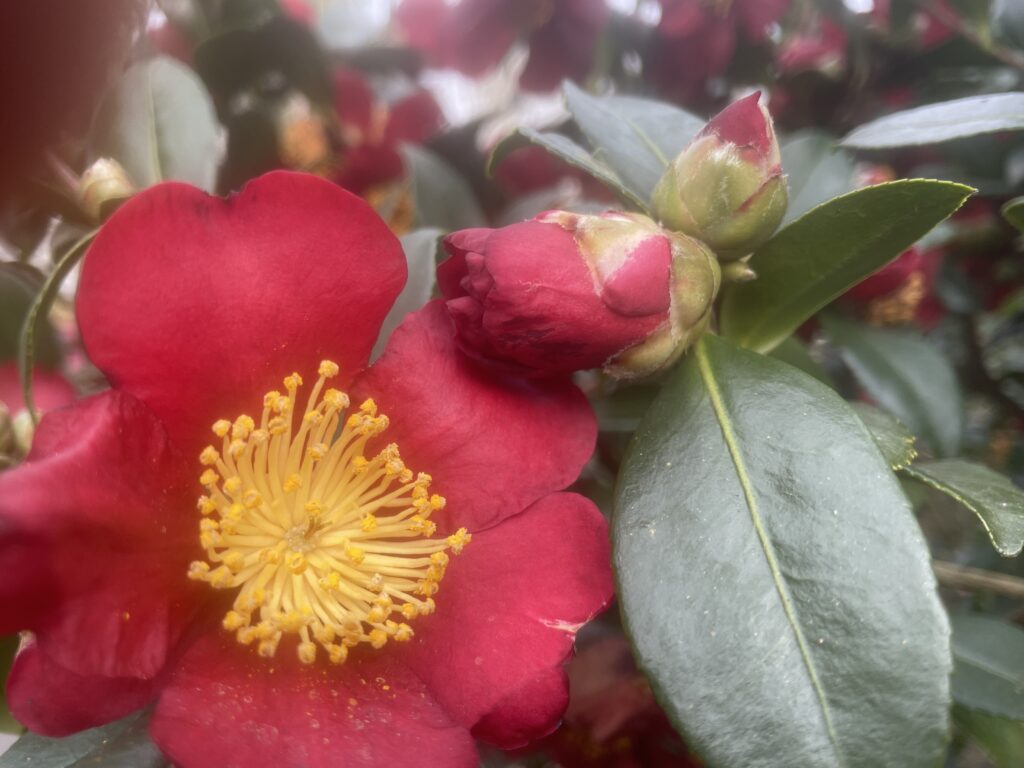
Good News Tree Service, Inc. provides many of the plant health care services as listed below.
- Arborvitae Berckmann’s Blight (Platycladus orientalis). Spray in the fall (late Sept. and early Oct., and again in early Nov. Spray again in early spring (Feb to Mar) if disease is severe.
- Dormant Spraying of Fruit Trees. Apply dormant sprays against insects and fungi.
- Lawns. Fertilize yellowing lawns.
- Piercing-Sucking Insects. Begin applying systemic insecticides against piercing sucking insects (aphids, lacebugs, scales, weevils, etc.) via soil injections (one treatment gives season-long control). This is a service that Good News Tree Service, Inc. provides. Free price quotes are available upon request.
- Photinia leaf spot. Spray a four applications of fungicide early in February at two week intervals afterwards. Early spray is key to controlling this fungus.
- Powdery Mildew. Apply a fungicides as soon as symptoms appear (when the weather begins to warm up). Best efficacy is obtained if used before symptoms appear. Use fungicide at seven to fourteen day intervals, or more often if conditions warrant it. If a plant is known to have had powdery mildew previously, apply as buds start to open.
- Tent Caterpillar. Apply systemic pesticide for season-long control.
Elsewhere in the Garden
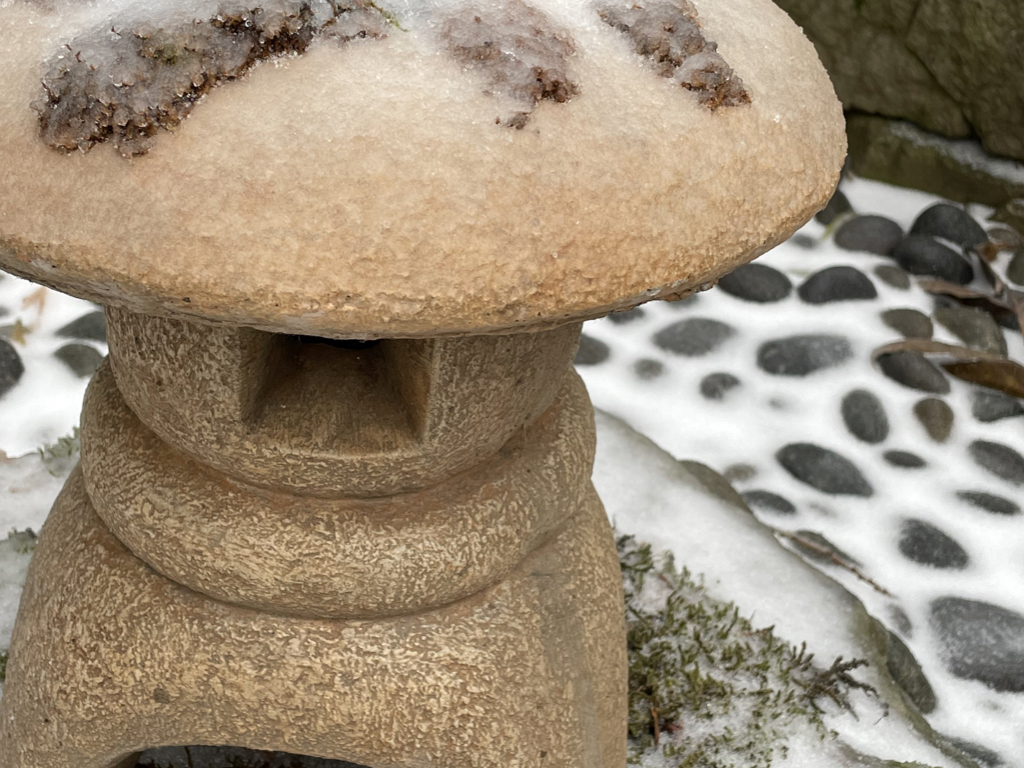
- Clean up. Rake and dispose of ornamental tree leaves, or better yet, compost them and then spread the decomposed leaves back onto your shrub beds as a mulch next year.
- Cut English ivy off of the base of trees. (This can be done any time of the year.)
- Feed the birds. Dutifully maintain your bird feeders. As winter comes, birds have a harder time finding food. This includes both seed and suet feeders. During dry spells, keep your bird bath watering hold full of fresh water. Caring for the local wild birds brings life and excitement to your backyard by turning it into a bird-friendly sanctuary. The birds will thank you for your generosity by providing you with hours of entertainment, and by eating insect pests that harm your ornamental trees and shrubs. Remember to feed your local humming birds that overwinter in our region. If possible, fill your humming bird feeders with a syrup that contains only 100 percent sugar (e.g., sucrose or dextrose) minus any artificial sweeteners, red dyes and other chemicals. Your birds will be healthier for it. You can find excellent bird care products and advice from knowledgeable and caring professionals at your local Backyard Bird Shop.
- Mulch all of your shrub beds. Put a two to three inches of mulch (e.g. bark dust, garden compost or wood chips) around perennials and other plants that might be sensitive to subfreezing weather. Also, spread a fresh layer of mulch (e.g. bark dust, garden compost or wood chips) on all the bare dirt areas in your yard to prevent soil compaction from rains, to prevent weed growth and to enrich and help to condition your heavy clay soils.
- Slug control. Put slug bait around winter flowers. Though the weather may be cold, slugs are still active.
Rose Care
- Prune your roses. The best time to do heavy pruning of roses is after the threat of major frost is past.
- Anytime of the year. Heavily mulch your roses. Organic mulch (such as wood chips, rotted compost, rotted manure) is the best. While barkdust helps to hold moisture in the soil, it contains little or no nutrients, so it doesn’t feed the soil and thus won’t feed your roses.
For more information on the care of roses, go to the Portland Rose Society website at https://www.portlandrosesociety.org/all_about_roses.html.
Lawn Care
- Perform mower maintenance. This is a good time to take your mower to repair shop for some annual engine maintenance and blade sharpening. Do it in the winter when the repair shops are not busy and to avoid the spring rush so that you will be ready to mow your grass in the spring.
- Other lawn care. Avoid walking on extremely soggy or heavily frost-covered lawns to avoid damage to your grass.
